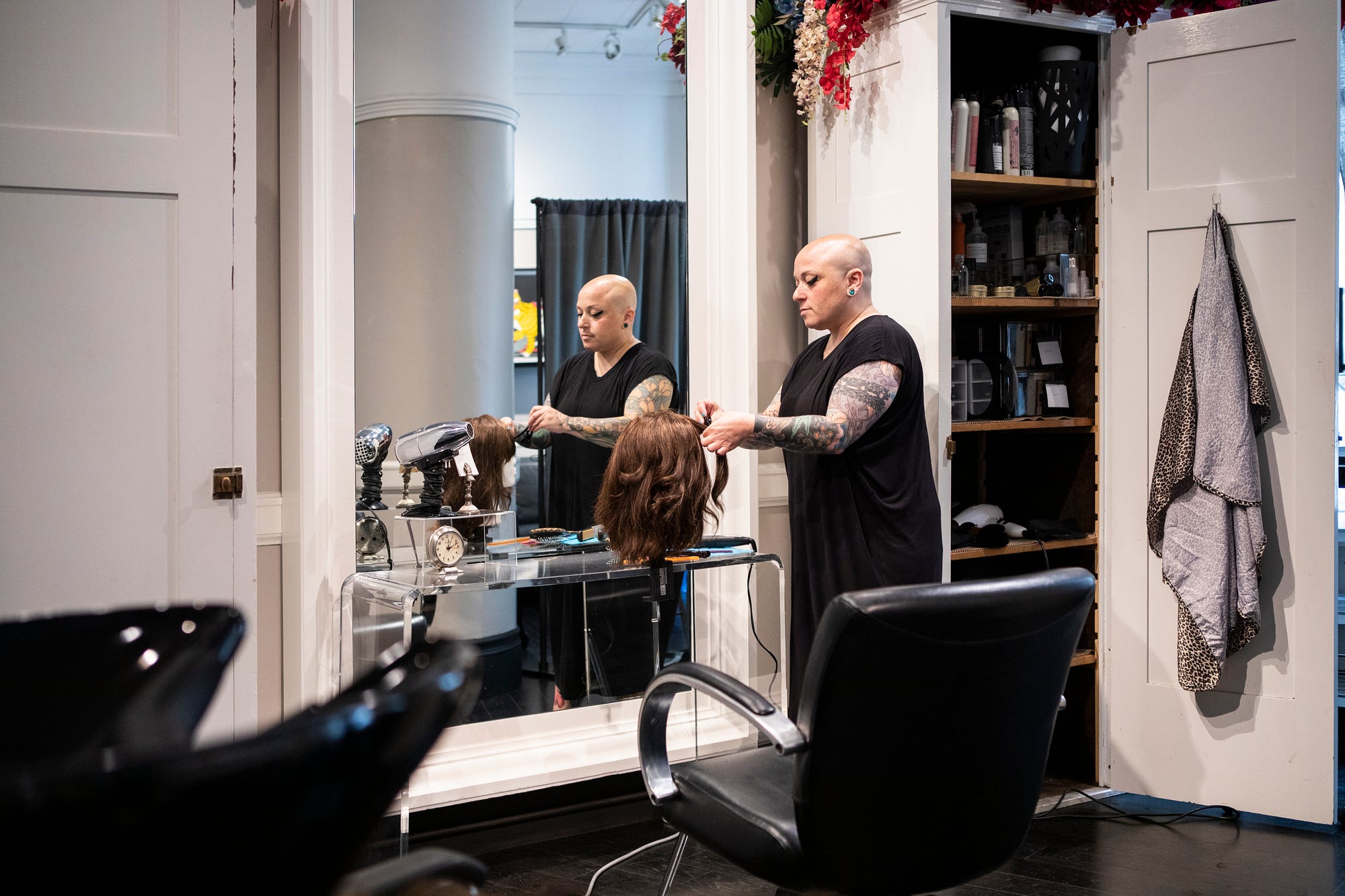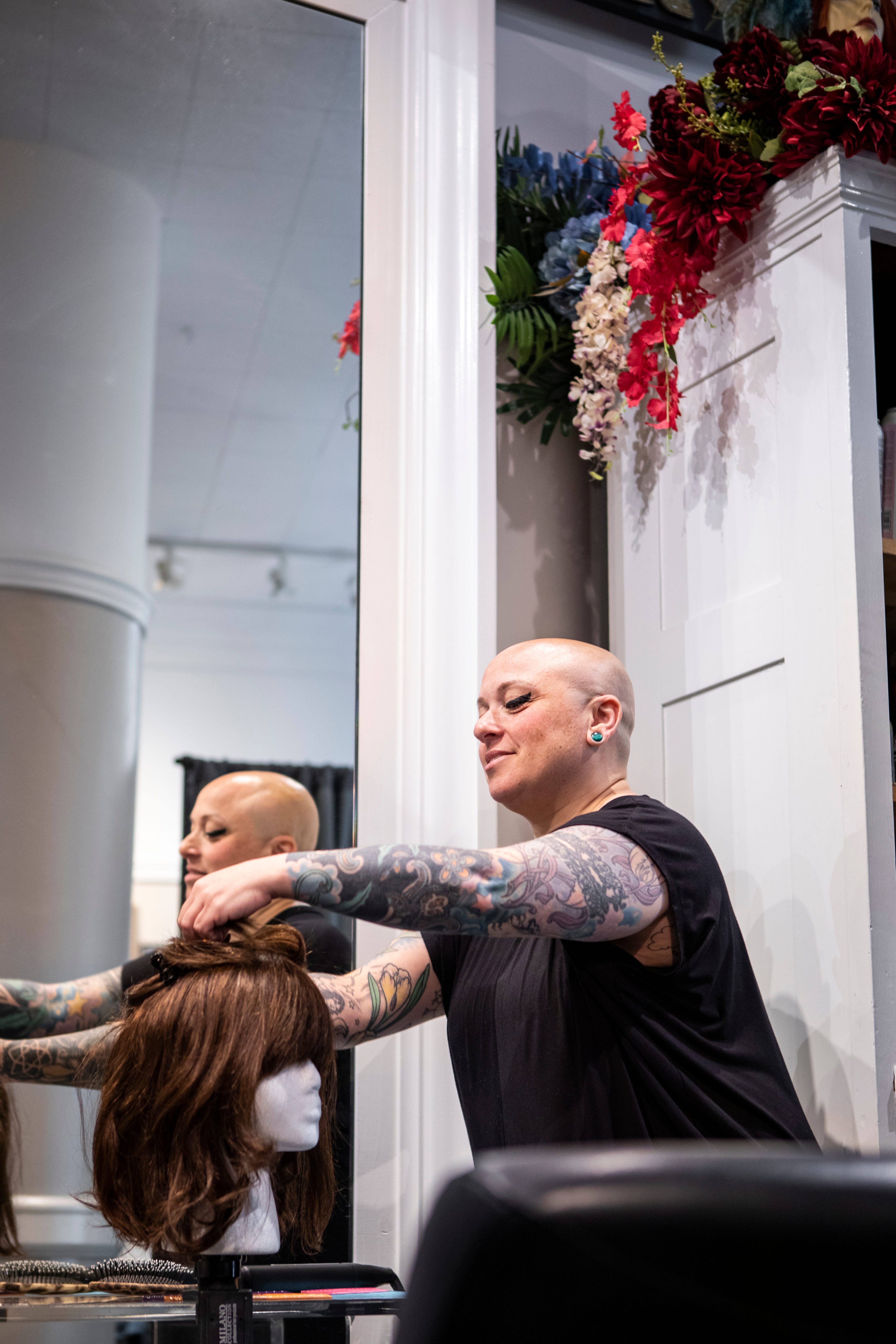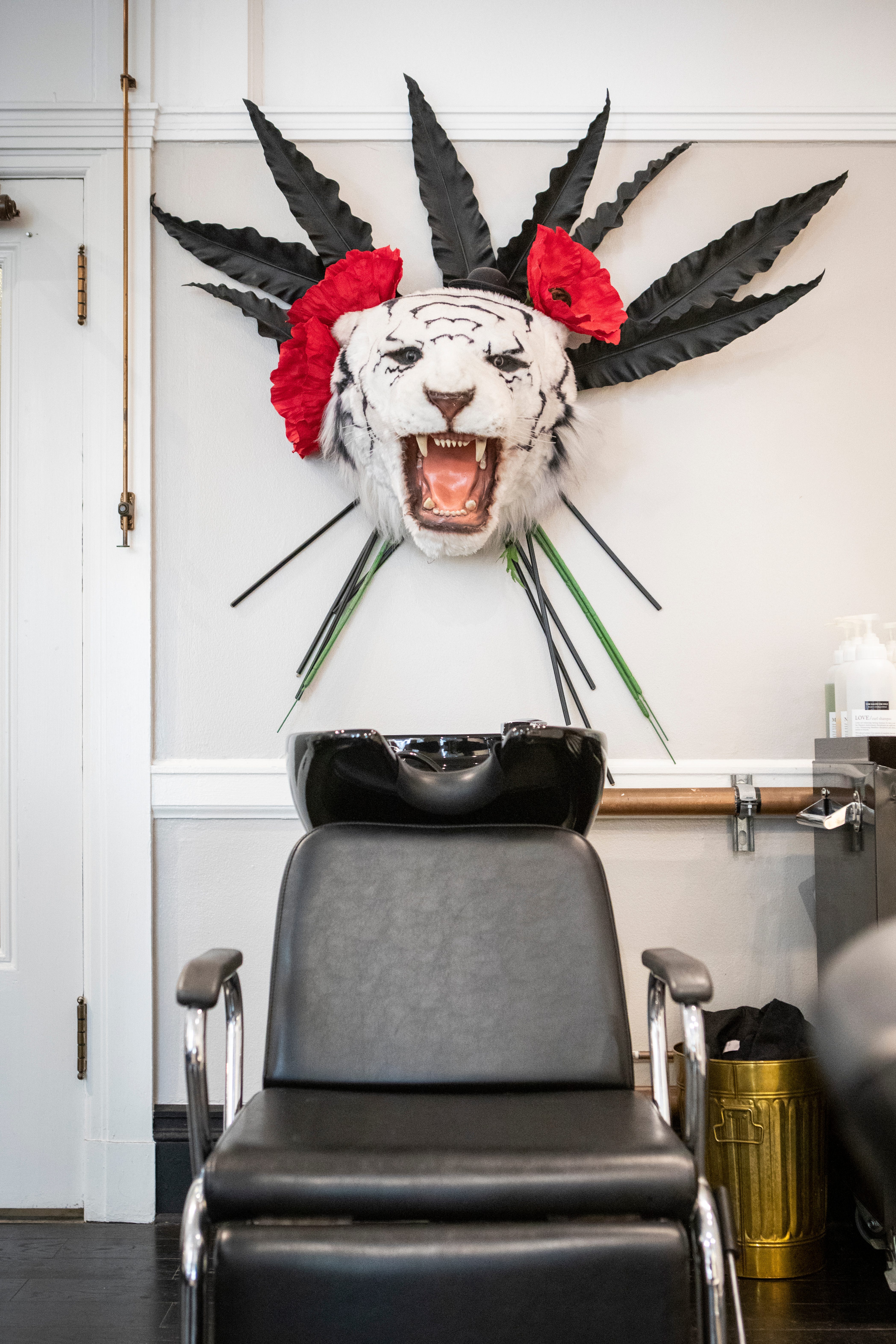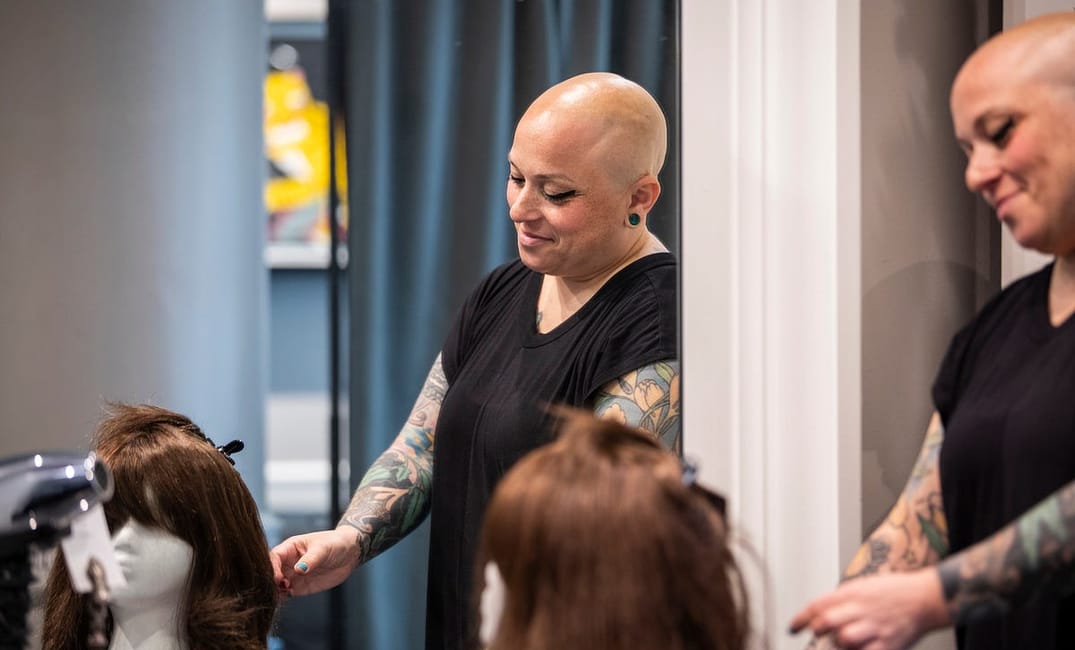
Getting a haircut is an intimate experience for anyone: you’re sitting there being touched by another person whose head is inches from your face for long spans of uninterrupted time, often while you watch them in the mirror, for a transaction in which you entrust them with your outward appearance. I see my stylist, Cheryl, more often than I see many of most of my friends who live in the East Bay.
Small wonder, then, that many of us develop deeply intimate personal relationships with our hair stylists, sharing with them our inner secrets and our family dramas, and sometimes even using them as someone might use a therapist.
But few hair stylists are actually licensed to work as therapists too. Well, except for Emily Howard, owner of San Francisco salon Moxie Parlour in the Flood Building on Powell and Market Streets. Howard, who went to beauty school and later earned an MFT, is quick to clarify that those enterprises are separate (meaning, she can’t legally do both at the same time). Still, the two fields are not so disparate as they might seem — particularly because Howard specializes in working with women with hair loss.
“I think it’s niche,” Howard told me. “I think it takes a lot for people to come in…a lot of my clients will say, ‘I haven’t been to a salon in 10 years.’”

Currently a registered associate marriage and family therapist, Howard is about to take her board exams to become a licensed MFT. Her private practice is right next door to Moxie Parlour in the Flood Building.
For women who have insecurities about hair loss, the experience can be physical as well as mental. It’s something Howard knows personally. Her path toward becoming one of the only— possibly the only — practicing therapist / hair stylists in the country was not totally random. Howard has alopecia, a condition whereby the immune system attacks hair folices and causes hair loss. In her cae, it started before adulthood.
“I started losing my hair when I was a teenager,” she told me. “It was hard. It was really hard.” To cope, she said, “I got really creative and did some wacky shit with my hair, and learned how to make my hair look thicker.
“I remember how when I got to undergrad, I was the person who people came to in my dorm room, and I would do their hair,” Howard said. “Around the year 2000 or so, I actually shaved my hair off because I had lost so much that it was just more trouble than it was worth.”
As an undergrad at SUNY Purchase, Howard studied psychology; later, she went to beauty school in 1997.
“I think I had the intention of going to graduate school around that time and thought, ‘Hey I’ll just get my beauty license and do hair while I put myself through grad school,’” she said. “And then I fell in love with doing hair. And loved it so much that I stayed with it for 20 years.”
In that span, Howard attracted a clientele that, in her words, has “alternative hair needs.”
Over the years, people have started coming in with alopecia — a general term for baldness— or because they’re losing their hair for other various medical reasons, such as trichotillomania, a hair-pulling disorder that sometimes stems from anxiety. Howard can help these clients with tricks to make their hair look thicker.
“I’m a little bit like the last house on the block—they’ve tried the medications; they’ve tried extensions; they’ve tried doctors of all kinds; and I’m just here to help them work with what they’ve got,” she said.
Her experience prompted her to start a support group for women with hair loss, which she did a decade ago before graduate school.
“And then that just was really great, and I was like, ‘You know, I’ve been wanting to do this for a long time anyway, and I want to make my group feel more legit, so I’ll go to graduate school and do the thing I said I was going to do 20 years ago.’”

Now that she has a private practice and a salon, Howard is doing both jobs part-time, bouncing between therapy and her salon work. I asked Howard if she ever feels like she’s doing therapy with her salon clients. She laughs, then ponders this for a moment.
“I think there’s…there’s something in the air when I’m doing a haircut, that if my client knows I’m a therapist, then they behave…there’s something there. I can’t put my finger on it,” she said.

Howard says that one of the things about her niche is how important sensitivity is when working with women who, like her, experience from hair loss.
“Sitting in front of a mirror for an hour…That’s not easy for people with hair loss and issues around that,” she said. “ I can bring awareness to that and turn them away from the mirror if they want, or we could be in the mirror together.”
Moxie Parlour is an intimate space with an eclectic and fun interior decoration. As you might expect from someone who’s so creative with hair, Howard has a flair for interior design. Within the salon, Howard works on only a single client’s hair at a time — meaning it’s just her and a client in there.



“I’m trying to find more [stylists] who want to make space in their practice for more sensitive clients,” she said. “I also don’t want to treat clients like they’re so fragile, either, because some people are totally fine. But I think the feedback that I’ve gotten is that the private space is something that really feels good and different.”
Talking with Howard makes me realize how uncommon it is to see bald women represented in media or culture. Likewise, while male pattern baldness is common — a common New Yorker cartoon topic and source of self-deprecating jokes from male comedians — women’s hair loss is rarely a pop culture subject. Yet our society would surely be richer and healthier if that taboo were shed: an estimated 30 million women in the United States have from some form of hair loss, according to the American Academy of Dermatology.
“Now I feel like in print media, models and stuff are a little bit more edgy with bald heads, or you see mannequins with bald heads now,” she said, noting that in film, bald women are almost always villains. “There are lists of movies where there’s been bald women. I would say that in 90 percent of them, the women are villains, and the men too. The bald characters are villains.”
She gives a shout-out to Black Panther for including positive images of bald women. “There were some strong bald female characters,” Howard said. She says that her therapy group was overjoyed to see “see someone kicking ass as a bald woman.”








